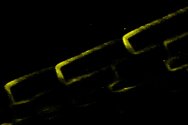
Project
The plant compass: functions of SOSEKI proteins
SOSEKI proteins are a novel family of conserved polar proteins. These proteins share a unique ability to localize to one specific corner of the plant cell, thereby integrating information from multiple polarity axes, which hints to their potential role as an organism-wide compass. Multiple lines of evidence suggesting their involvement polar processes in the plant cell. In this project, we study the biological function of SOSEKIs and the molecular pathways they are involved in.
SOSEKIs are an ancient family of polar proteins conserved across land plants. These proteins share a unique ability to localise to one specific corner of the plant cell, regardless of what tissue they are expressed in. To do so, they read polarity cues from multiple different axes (apical-basal, inside-outside etc). By marking their respective corners, these proteins behave as a sort of organism-wide polarity compass.
Aim of the project
We have found that SOSEKIs are expressed in the embryo, the root, and multiple other tissues of the plant. SOSEKIs are found in all land plants, and even in bryophytes they localize polarly. However, the function of these ancient, conserved proteins remains enigmatic. In this project, we investigate the biological role of SOSEKIs, how the mechanisms of their polar localization and their molecular functions.
To uncover the role of SOSEKIs, we will delete SOSEKI genes in Arabidopsis with CRISPR-Cas and analyse the phenotypes of these mutants. We will change various properties of SOSEKIs and complement the deletion lines with them to see how different properties of the SOSEKIs affect their function. We will also overexpress SOSEKIs in various tissues and investigate how this affects processes in the cell. We will also investigate the protein interaction partners of SOSEKIs and their functional significance.
Contact us
This project uses techniques such as genome editing with CRISPR-Cas, advanced confocal microscopy, and microfluidics. Do you have questions, or would you like to join us as a student researcher? Contact us!


